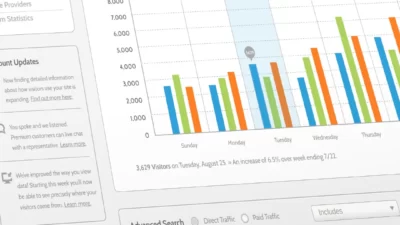The bounce rate is an important metric in website analytics. It is the percentage of visitors who land on a website and leave without taking any further action, such as clicking on links, filling out a form, or making a purchase. A high bounce rate indicates that visitors are not engaging with the content on the website, which can negatively impact its performance.
Understanding Bounce Rate
There are several reasons why a website may have a high bounce rate. One of the most common is that the website does not meet the visitors’ expectations. If a visitor clicks on a link or types in a URL expecting to find something specific, and instead is presented with irrelevant or confusing content, they are likely to leave the site immediately.
Another reason for a high bounce rate is slow loading times. If a website takes too long to load, visitors may lose patience and decide to leave the site before it has even fully loaded. Additionally, if the website is not mobile-friendly, visitors who access it on their mobile devices may have difficulty navigating the site and may leave without engaging with the content.
How to Reduce Bounce Rate
There are several strategies that website owners can use to reduce their bounce rate and improve the overall performance of their sites.
Improve Website Design and Navigation
One of the most effective ways to reduce bounce rate is to improve the design and navigation of the website. A well-designed website with clear navigation will make it easy for visitors to find the information they are looking for and encourage them to stay on the site longer.
Some tips for improving website design and navigation include:
Use a clean, modern design that is easy on the eyes and visually appealing.
Use clear, concise headings and subheadings to break up content and make it easier to read.
Use a simple, intuitive navigation menu to help visitors find the information they’re looking for.
Use clear, high-quality images and videos to make the content more engaging.
Optimize Page Speed
As mentioned earlier, slow loading times are a common cause of high bounce rates. To reduce bounce rates, website owners need to ensure that their website loads quickly and efficiently. This can be achieved by optimizing page speed.
Some tips for optimizing page speed include:
Use a reliable web hosting service that can handle high traffic volumes and provide fast loading times.
Use a content delivery network (CDN) to improve page load times and reduce server response time.
Minimize the use of large images and videos that can slow down page load times.
Optimize website code and reduce the number of HTTP requests to improve page speed.
Ensure Mobile Responsiveness
In today’s mobile-first world, it is essential for websites to be mobile-responsive. This means that the website should be optimized for viewing on mobile devices such as smartphones and tablets.
Some tips for ensuring mobile responsiveness include:
Use a responsive design that adjusts to the size of the device’s screen.
Use large, easy-to-read text that can be viewed on small screens.
Ensure all buttons and links are large enough to be clicked on using a touchscreen.
Optimize page speed for mobile devices by reducing the size of images and videos.
Provide Quality Content
Ultimately, the most effective way to reduce the bounce rate is to provide quality content that meets the needs and expectations of the visitors. If visitors find the content on a website informative, engaging, and relevant to their needs, they are more likely to stay on the site longer and engage with the content.
Some tips for providing quality content include:
Conduct research to learn about the target audience’s needs and preferences.
Make use of simple, clear language that is simple to understand.
Provide informative and engaging content that adds value to the visitor.
Use images, videos, and other multimedia to make the content more visually appealing and engaging.
Use Call-to-Actions (CTAs)
Another effective way to reduce bounce rate is to use call-to-actions (CTAs) strategically throughout the website. CTAs are buttons, links, or messages that encourage visitors to take a specific action, such as filling out a form, subscribing to a newsletter, or making a purchase.
Some tips for using CTAs effectively include:
Place CTAs in prominent locations on the website, such as at the top of the page or in the sidebar.
Use clear and concise language to convey the desired action’s benefits.
Use contrasting colors for the CTA button to make it stand out from the rest of the content.
Test different CTAs to see which ones are most effective at reducing bounce rate.
Conclusion
Bounce rate is an important metric that website owners need to pay attention to in order to improve the performance of their site. By understanding the reasons for a high bounce rate and implementing strategies to reduce it, website owners can improve the user experience, increase engagement, and ultimately achieve their business goals. Improving website design and navigation, optimizing page speed, ensuring mobile responsiveness, providing quality content, and using CTAs strategically are some effective ways to reduce bounce rates and improve the performance of a website.




